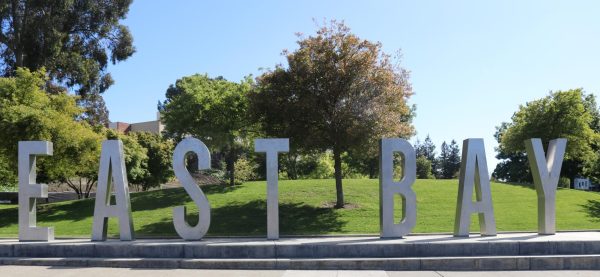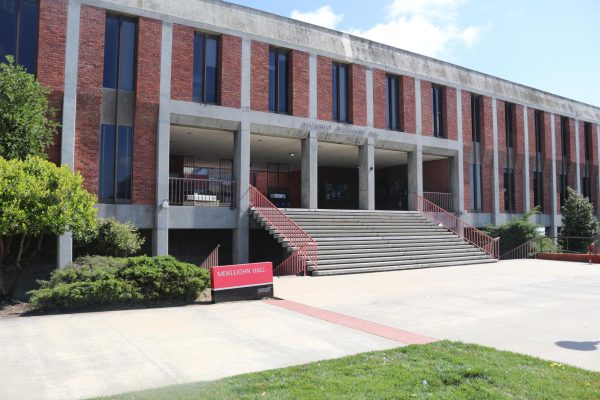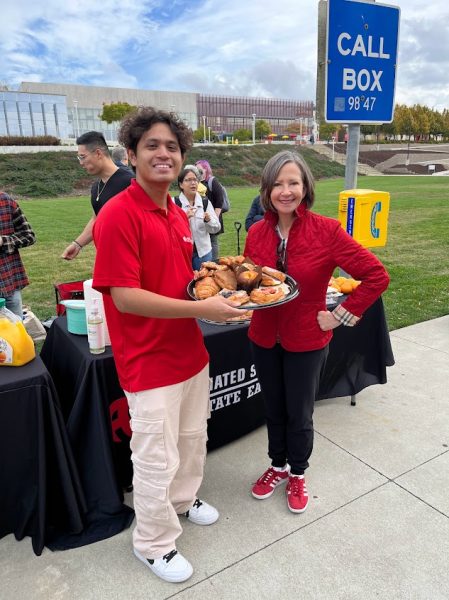Till Debt do us part, a vow that First-Generation students are taking
Vanessa Martinez, Photo Editor
June 27, 2020
The long-standing issue of student loan debt haunts many students to this day. Knowing that the vow they’ve agreed to take out a loan will cost them for the better, or for the worst. Follow the stories of First-Generation Student graduates with student debt.
Recent statistics for 2019 stated that America’s total student loan debt is now over $1.56 trillion, making this the second-highest debt in the US, according to FORBES.
Students are collecting thousands of dollars of debt by the time they graduate from a four-year, the issue here is the education system lacks to provide knowledge when applying for loans.
“I didn’t know anything about student loans,” Milani Villarruel, a student at California State University, East Bay, said in an interview.
Milani Villarruel’s story is just one example of a first-generation student who is dealing with debt. Fall of 2015 at Chaffey Community College in Rancho Cucamonga, was the road map to her college education.
While attending this Community College she qualified for The California College Promise Grant (CCPG) or formerly known as The Board of Governors Fee Waiver (BOGW ). With this grant issued by the State of California, it waived the enrollment fee for her until graduation day at Chaffey.
Fall of 2017, Villarruel took out a deferred loan of $15 thousand dollars to help her with expenses at CSUEB. With the interest that comes with loans, her debt increased to $22 thousand dollars. She pointed out that this was only her undergraduate degree and after receiving her bachelor’s degree she will be going into Law school.
“I got a full-time job working 12 hours, four days a week at Amazon to pay off for student loans,” Villarruel says, it would take her an estimated 20 years to pay off her debt. “ If you’re going to get student loans, work hard, to make the loans worth it.”
According to the U.S Department of Education’s National Center for Education Statistics ( NCES) stated that 74 percent of first-generation students who borrowed money for their undergrad debt was $30,700 compared to non- first generation the amount was $28,000 according to NCES data. The first-generation student had a higher chance of taking out loans.
“I think they make it too easy for anyone to take out a loan and [ They] don’t really educate students on how to do it. They make it so easy for an 18-year-old to take out a 5000 loan, “ Daniel Gonzalez, an Academic Counselor for Santa Barbara City College, said in an interview.
“Loans were confusing to me. I took one out while at CSUCI ( California State University, Channel Island ) but took out larger ones while earning my Masters. I did not know the difference or [understood] which was the one that had interest right away. “
Gonzalez recalled, the main goal at first was to get through high school “ College was NEVER the goal but after hearing about a program called EOPS ( Extended Opportunity Program and service ) [at Santa Barbara City College] I gained interest”
After 5 years at SBCC, he transferred to CSUCI in 2010 majoring in sociology. Then in 2012, he earned his Bachelor’s degree “ I thought I was done! Little did I know I would earn my masters in 2017 in counseling, something I never imagined. “ After graduation, he was in debt of 50,000 paying which would take a minimum of 13 years to pay off, due to his full-time job at SBCC he was able to request for a loan different where he would temporarily stop making payments.
“I do not regret it because there was no way I could have paid that at the time but I wish I would have been taught to save money growing up, something I am instilling in my son now. It hurts that the only way I could make the money I do now and earn this position was to go into debt but I am hoping it will be worth it .“
Daisy Torres, a UC Berkeley graduate, took out a loan of around $4-5 thousand dollars. Before taking out a loan Torres was attending Santa Barbara City College with the three years she attended, she had the help of Financial Aid, but when it came time for her to transfer that’s when she had to make a decision about taking out a loan. Before Torres took out a loan her understanding of student loans was limited “ I kinda knew about loan since I worked for EOPS” but can agree her resources were limited.
“Financial Aid didn’t cover everything. So in order for me to not stress out and not stress my parents, and not ask them for money, I took out a loan “ Daisy graduated in Spring of 2019 in and is making monthly payments of an estimated 100 dollars, with the leftover debt of around $3 thousand.
Marylou Hernandez, a Santa Barbara City College and Antioch University Santa Barbara graduate, education began when she first decided to attend SBCC. Her first year she qualified for the BOG waiver, EOPS, and Financial Aid. “ I didn’t know what FAFSA was until my second semester,” says Huerta with the help of the Financial aid office she was able to complete it.
Hernandez, came across a conflict when it came time to transfer to Antioch. In a meeting with her advisor for that school she was told she was no longer eligible for FAFSA and that she used up all her funds. This came as a surprise to her.
“I wish people could have provided clear information, Never knew that never did it cross my mind, [ it was ] never really communicated to me you can run out of FAFSA “ I don’t blame anybody for that it my responsibility as a student. After finding out that you can run out of financial aid, she made sure that her younger sister knew and her nephew knew.
With the outcome of running out of Financial Aid she was getting ready to attend Antoch the school she planned to transfer to, but since it was a private school she had to face come up with a way to pay for tuition, but after being told she no longer qualified for free money, she had no other choice than to take out loans. After earning her degree she began to work for Santa Barbara City College, which made her a public service worker. Which allowed you to apply for student loan forgiveness.
Marylou applied for the program when she graduated in December of 2016, “ I applied four years ago, and I’m hopeful that I will get approved. If not I will be paying for a long time”. She added that she would be paying off her loans of 15 to 20 years.
“I remember thinking about and debiting it a lot I was just like at the end of the day if I’m gonna take out any loans I’m gonna take out a loan that invests in me and my education, “ she adds on that School debt is good debt I’ve always been told that if you’re going to have any type of debt have school debt,” says Marylou Hernandez.
SIDEBAR: Student loan Forgiveness Program, COVID-19 impacts on loans
Interest rates on all student loans held by federal government agencies allowed student loan borrowers to take time off on the monthly payments and no penalties would affect their loans.
President Trump mentioned that student loan payments would be suspended for 60 days due to the recent impact of Covid-19, a virus that affected the economy.
For some students, this bill applied to them such as Marylou Hernadez, a graduate from
Antioch University Santa Barbara. qualified for the 60-day hold on loans.
When she first heard about the hold he was confused because she received an email stating her payment was due, which she found odd since he has autopay. She then read her email saying ‘ You don’t have to make payments for three months, or you can continue to pay ” This was all due to the Cares act.
The Cares Act was created to’ keep businesses and individuals afloat during an unprecedented freeze on the majority of American life’, according to NPR. The Senate passed a $2 trillion Coronavirus response bill to help American economy. With education getting an estimate of $43.7 billion.
With several locations closed due to the virus schools still remained in session which allowed her to continue to work. “ I ‘ m very lucky to still be working for the college ( SBCC), I save paycheck every month. I feel like if I can continue to still make my paycheck, [ I am] gonna continue, [ to] still paying,” says MaryLou Hernandez, in an interview.
Since applying for the student loan forgiveness program back in December of 2016, since applying it has now been four years since she applied. She still waits for the day when she is told that her loans are forgiven.
If she is not approved she’s looking at an estimate of 15-20 years to pay off her loans.















